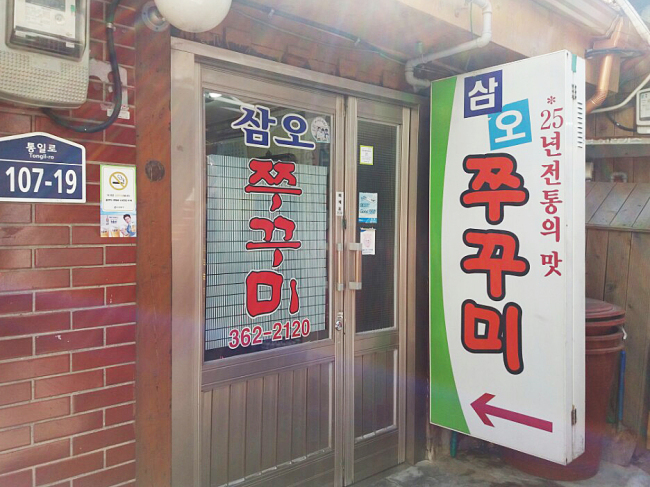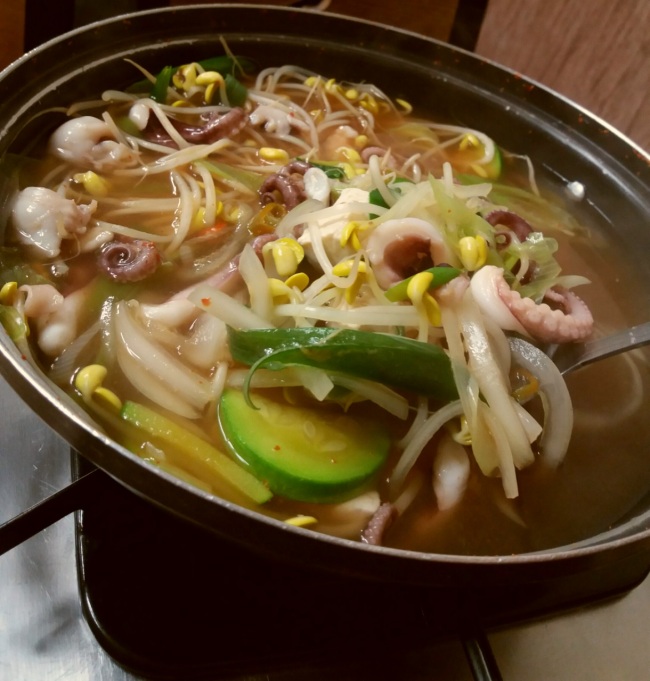As winter ends so does the robust seafood season that filled our palates with the freshest catches in the frigid months. As if to offer one last hurrah, baby webfoot octopus, known as jjukkumi, make their way onto menus heralding the advent of a glorious spring.
There is no doubt that Koreans know their seafood, and there is no surprise as to how creatively they like to enjoy it. From raw soy-pickled crab to par-dried salted grilled fish, to the absolutely wacky, wriggling sannakji squid eaten alive, there seems to be no shore rock or sea bed that hasn’t been unturned, foraged and scavenged for some edible bit and turned into a dish only Koreans could come up with.
Jjukkumi, known as webfoot or short-arm octopus, are cephalopods belonging to the octopus membranaceus genus and mainly inhabit western Pacific waters. With a petite bulbous head and tentacles no bigger than 12-17 centimeters in length, webfoot octopus have an inferior reputation compared to other cephalopods such as nakji, squid and the meatier-bodied octopuses that find their way into many Korean dishes, the most popular being bokkeum, or stir-fry. Nonetheless, jjukkumi lacks nothing but mere size in contrast to his brothers and sisters, making it not only a seasonal and regional specialty but a pleasant change to be enjoyed equally.
 |
Hidden at the end of an alley in Seodaemun-gu, Seoul, Samo Jjukkumi has been serving webfoot octopus for over 30 years (Christine Cho) |
Along the west coast of the Korean Peninsula is where most jjukkumi are found, though they can be found throughout the country almost anytime of the year. However, as with most other seafoods in Korea, eating purposefully in season always has truer meaning and catching the jjukkumi in its pre-spawning phase is most desired. A fuller body during the late winter, early spring season, jjukkumi are worth seeking out as they have many nutritious benefits, maintaining a lower caloric count than octopus and squid, and being a great source of protein and essential amino acids.
For these reasons, jjukkumi is well-known as a Korean health food, but is also a great vehicle of flavor and cooking technique as is displayed at the family-run restaurant Samo Jjukkumi in Seodaemun-gu, Seoul. This small restaurant at the end of a dead end alleyway has been serving only three dishes over the last 30 years, and it does so effortlessly and comfortably in a space that is cramped and unpolished, but clean nevertheless.
 |
Samo Jjukkumi’s jjukkumi jeongol(photo: Christine Cho) |
If one is tired of the heavily doused gochujang red pepper versions of Korean dishes, Samo Jjukkumi’s jjukkumi jeongol, or hot pot, is a great example of how flavorful and perfectly simple Korean food can be on the opposite spectrum. A shallow cooking dish of light amber-hued anchovy broth is filled with jjukkumi, tofu, and vegetables peeking out from a heaping portion of fresh crunchy beansprouts. The jeongol is delivered to the table to finish cooking tabletop, and after a good roil it is ready to be served. What may look like a trumped up bean sprout soup, exudes the delicately mild flavor of jjukkumi, soft and chewy with each bite. The earthiness of the vegetables, finished with a hint of red pepper flakes makes this jeongol everything you want in a springtime dish, filled with unadulterated flavors.
By Christine Cho (thepalatekorea@gmail.com)
Samo Jjukkumi
Address: 107-19, Tongil-ro, Seodaemun-gu, Seoul
Phone: (02)362-2120
Recommended dish: Jjukkumi Jeongol 7,000 won









